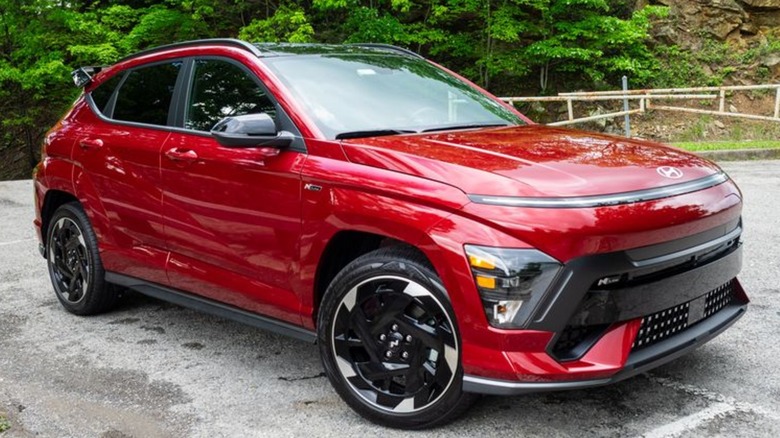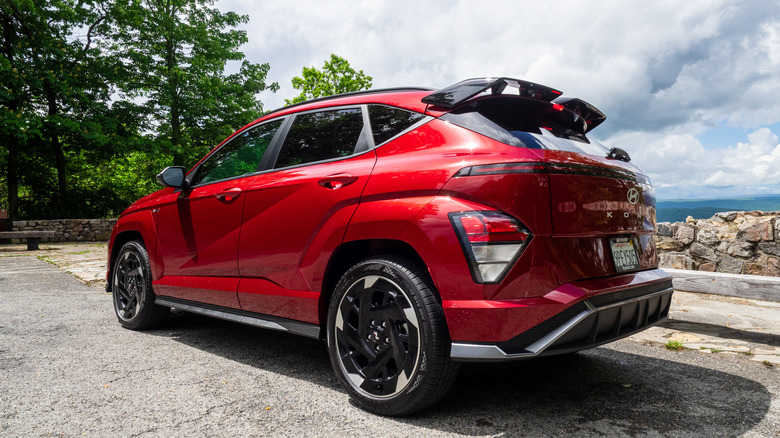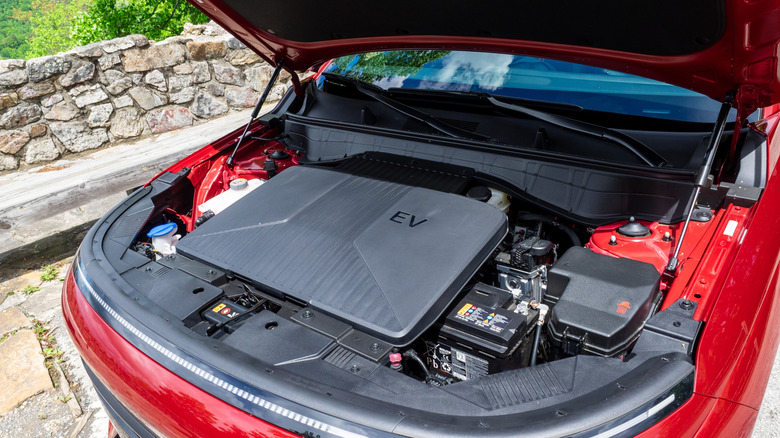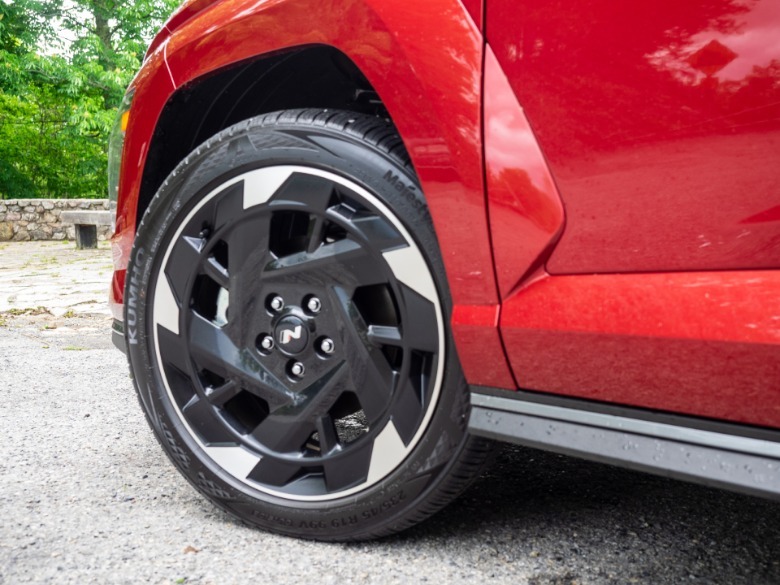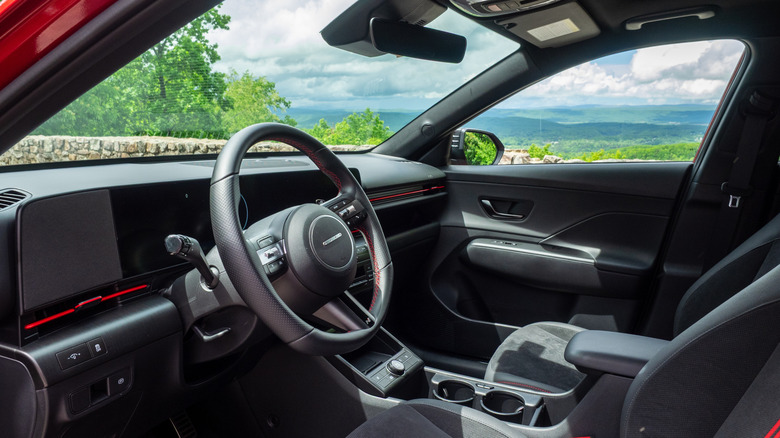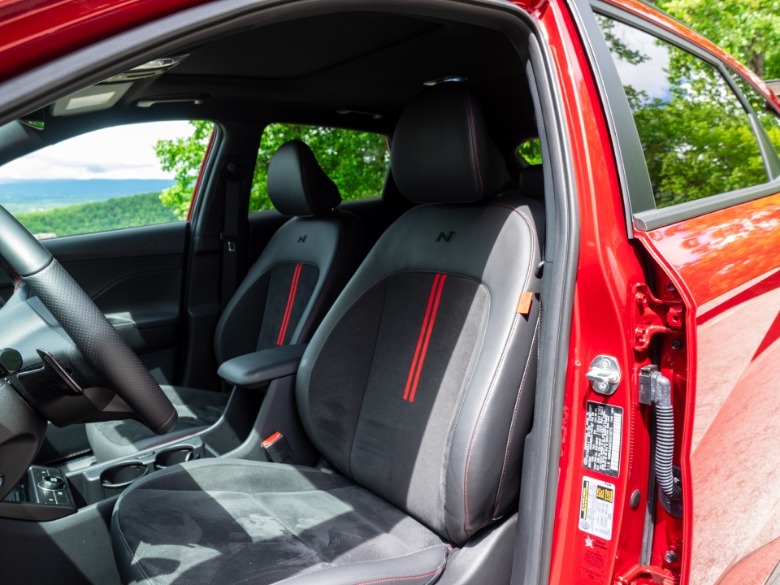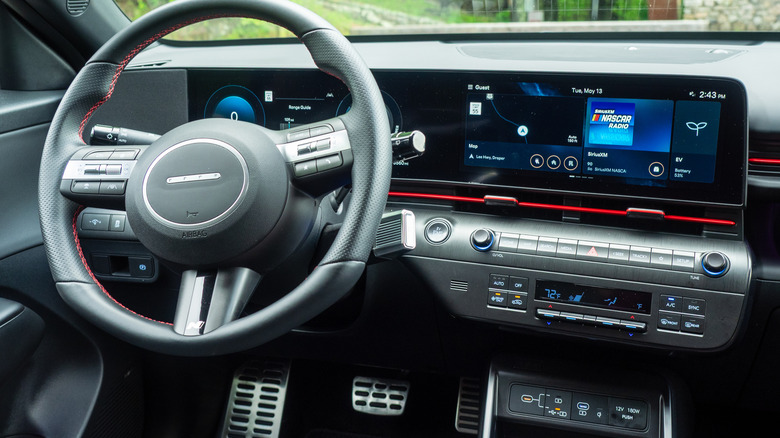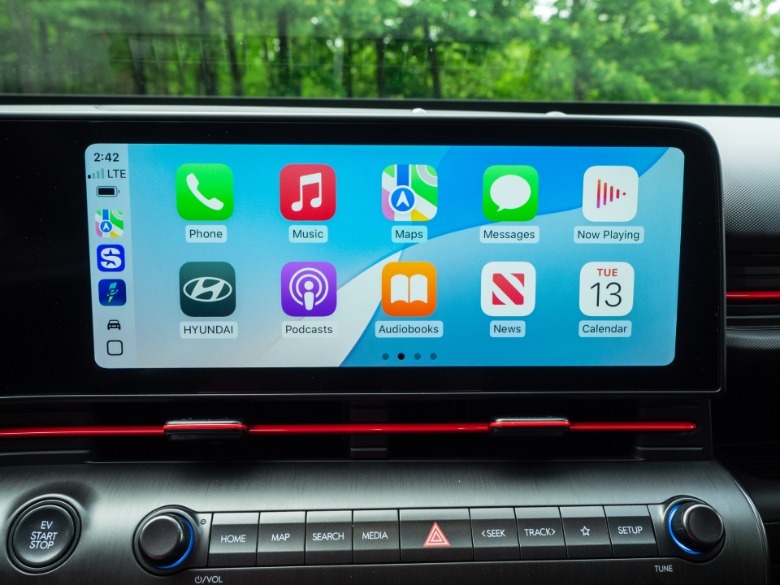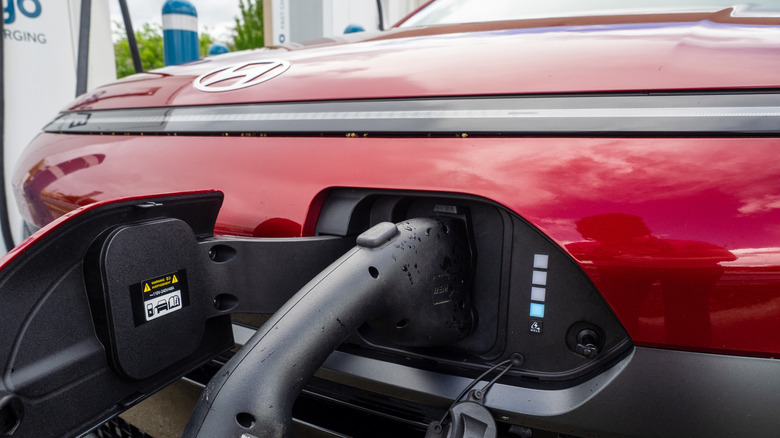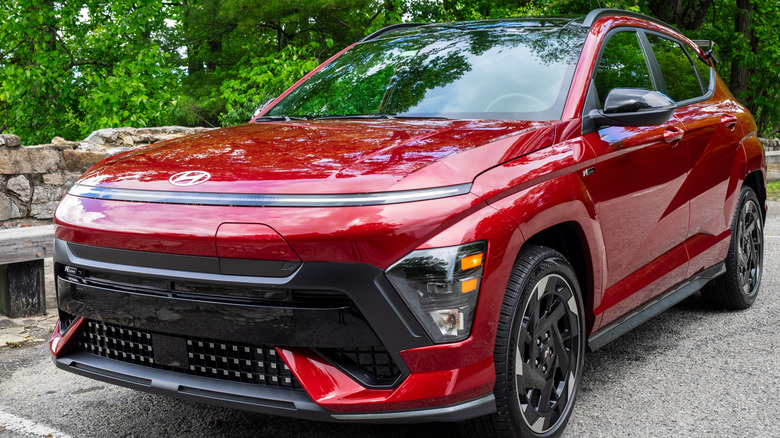2025 Hyundai Kona Electric N Line Review: Affordable, But Not The Trim I'd Pick
When Hyundai introduced the second-gen Kona to the U.S. market in 2023 for the 2024 model year, one of the automaker's main points with their popular subcompact was that this one would be built on an "electric first" philosophy, focusing more on electrification than on continuing to put gasoline in pole position. From its exterior appearance to the adoption of the Ioniq EV family's dashboard and driving controls, the new Kona has lived up to this new order quite well.
New for 2025, the Kona Electric N Line has its own goal: bring the sportiness of the N lineup to the entry-level side of the Hyundai family. With no new Kona N powered by gas or electrons on the horizon still, this may be the next best option available. Recently, Hyundai sent a example down to my home in Southwestern Virginia (though it had to be done at the EVgo station north of town due to repaving of the very street in front of my home). After spending time with the gas-powered version last year, it was time to see if the electric N Line could match up.
Electric first, your wallet next
The 2025 Hyundai Kona was the smallest crossover in the lineup until the Venue took its spot at the start of the 2020s. Still, it has a price to match its size, starting at $24,550 with a destination fee of $1,395 at the base SE trim, all the way to a starting MSRP of $32,100 for the Limited with destination. That's just a few hundred short of the base price of the 2025 Kona Electric lineup, which happens to be $32,975 for the base SE with destination.
The electric version of the 2025 N Line starts at $38,375 plus destination, while our tester topped out at a total sticker of $40,350 plus destination. That's nearly $1,000 below the top-tier Kona Electric Limited's base MSRP of $41,150 plus destination. Hyundai's decision to build the second-gen Kona as an "electric-first" compact crossover will leave your wallet begging for relief at the dealership should you follow the Korean automaker's lead. As the saying goes, though, "buy well, weep once."
All the room in the world for a fully electric experience
The Kona N Line we reviewed last year packed a 1.6-liter turbocharged four-cylinder, sending 190 turbohorses and their combined 195 lb-ft of torque to either the front or all corners through the standard eight-speed automatic. This is not what you'll find under the hood of the 2025 Kona Electric N Line, though.
Occupying the engine bay instead is a 201-horsepower, 150-kW electric motor and the systems it needs to work; this setup is shared with the SEL and Limited, while the base SE only has 133 horsepower/99 kW. Torque output is the same throughout the lineup at 188 lb-ft, and all of that power reaches the front wheels via a single-speed reduction gear transmission.
The Electric N Line stands out on the road with a set of 19-inch N Line Design alloys wrapped in Kumho Majestys; the rest of the 2025 Kona Electric family must make do with only 17-inch wheels. Though they give the electric subcompact crossover some zazz, they don't make for the comfiest experience on the rougher roads around town, including the street in front of my home, which was undergoing repaving the week this Hyundai silently glided into town. Once those roads were finished and sealed, though, the experience smoothed out. Those wheels happen to hide a full set of disc brakes with regenerative braking, a much-needed feature when total range on a single charge is 230 miles; a long-distance machine this isn't.
Sporty, yet comfy
If you happen to have sat inside Hyundai's Ioniq lineup, then you'll recognize the 2025 Kona Electric N Line's interior. In fact, more and more Hyundai models, whether they be gas, hybrid, or electric, have adopted the Ioniq's interior styling when it comes to the dash, including the square stalk shifter with a side button to push to park. It's a neat feature for sure, though on the Kona Electric, it could be placed higher on the steering column, as I sometimes had a hard time seeing the shifter when I was putting the Kona Electric N Line in neutral for the automatic car wash.
Behind all of that Ioniq-ness, though, are a pair of heated front seats draped in N Line Sport Combination Alcantara seating with suede-esque inserts, trimmed with a pair of red racing stripes down the center and the Hyundai N logo below the headrests. The rear 60/40-split rear bench isn't as jazzy as the pair up front, and three adults might not like the cramped confines, especially if the front occupants are as tall as they are.
The front passenger must also do without the power adjustments the driver receives, as their seat is completely manual. The standard sunroof doesn't go over the entire roof, either. Finally, the cargo space starts at 25.5 cu-ft with the rear bench up, expanding to 63.7 cu-ft with the bench folded. The roof rails offer more storage possibilities, too.
Technology doesn't have to get in the way of driving
Oddball shifter aside, the 2025 Kona Electric N Line greets you with a pair of 12.3-inch screen in a single, continuous frame. The center touchscreen supports wireless Apple CarPlay and Android Auto, Hyundai's BlueLink+ subscription services, a Wi-Fi hotspot, and a trial of SiriusXM. Those who need to connect their phones with wires for charging purposes can do so through a pair of USB-C ports up front, plus another pair for rear passengers in the center console armrest. That armrest, by the way, is quite open, allowing you to stow purses and other items without needing to lift the armrest itself (although I did need to do so to move the tray underneath so I could get my purse in the space when the front passenger seat was occupied by my mom).
Audio and HVAC controls are, thankfully, still in the physical world via several buttons, a few switches, and a couple of knobs. As Hyundai has stated, the automaker will work to keep physical controls in their lineup's interiors where it most makes sense, realizing that it's ultimately safer for the driver to rely on muscle memory than dig through menus.
With no engine noise to fill the cabin, the eight-speaker Bose Premium stereo system washed over the silence quite well, allowing my favorite voices to come in loud and clear. Standard safety features include adaptive cruise control with lane-keeping and lane-following assists, blind-spot warning, forward collision and safe exit warnings, and high beam assist. While there is a rear camera, there isn't a 360-degree system like that on the top-tier Kona Electric Limited. Good thing the Kona has good frontward visibility overall, then.
Life in the electric fast lane
Living with the 2025 Kona Electric N Line for a week reminds me why I don't see myself jumping into the electric lifestyle anytime soon. After all, the first rule of EV ownership is that these machines work best if they're charged at home, before heading out to charging stations on the road. Sadly, my own place lacks any way to charge a plug-in vehicle of any kind, but I don't live too far from a few EVgo stations in town and in nearby Blacksburg. If I had Hyundai's NACS (aka Tesla) charging adapter, I could have also charged up at the newest Tesla Supercharger array in Blacksburg; alas, my tester did not come with the adapter.
Charging the Kona Electric N Line's 65.4-kWh lithium ion battery from 20% to 80% on a Level 3 DC fast charger unit takes around 40 to 50 minutes, while Level 2 charging — such as from a home charger — averages around 9.5 hours. Level 1 charging on a 110V outlet, however, is a painfully slow 2.5 days.
Once fully charged, the EPA-estimated 103 combined MPGe (113 city/93 highway) works out to 33 kWh per 100 miles. My final average was 3.7 kWh per mile, which is about 125 MPGe. If range is a concern, though, the Kona Electric SEL and Limited offer the most at 261 miles per charge; we'd opt for those for long-distance drivers over the N Line's 230 miles or the base SE's 200 miles.
2025 Hyundai Kona N Line EV Verdict
After a week in this Ultimate Red Metallic (adding $470 to the overall sticker) Hyundai, I can say the electric Kona is a good alternative for those who want this subcompact crossover without the gasoline (as long as they're able to charge up at home more often than not). Its looks definitely fit with the "electric first" philosophy Hyundai had in mind for the second-gen Kona, but it's still at heart a handy crossover that's good for small families and able to handle all of life's errands, it not all of life's adventures.
The Kona Electric's price structure can be a bit much for budget-minded Hyundai fans, and range can be an issue for long-distance warriors, but those who know this Hyundai's limits and can work around them will be rewarded with a quiet, comfortable machine.
